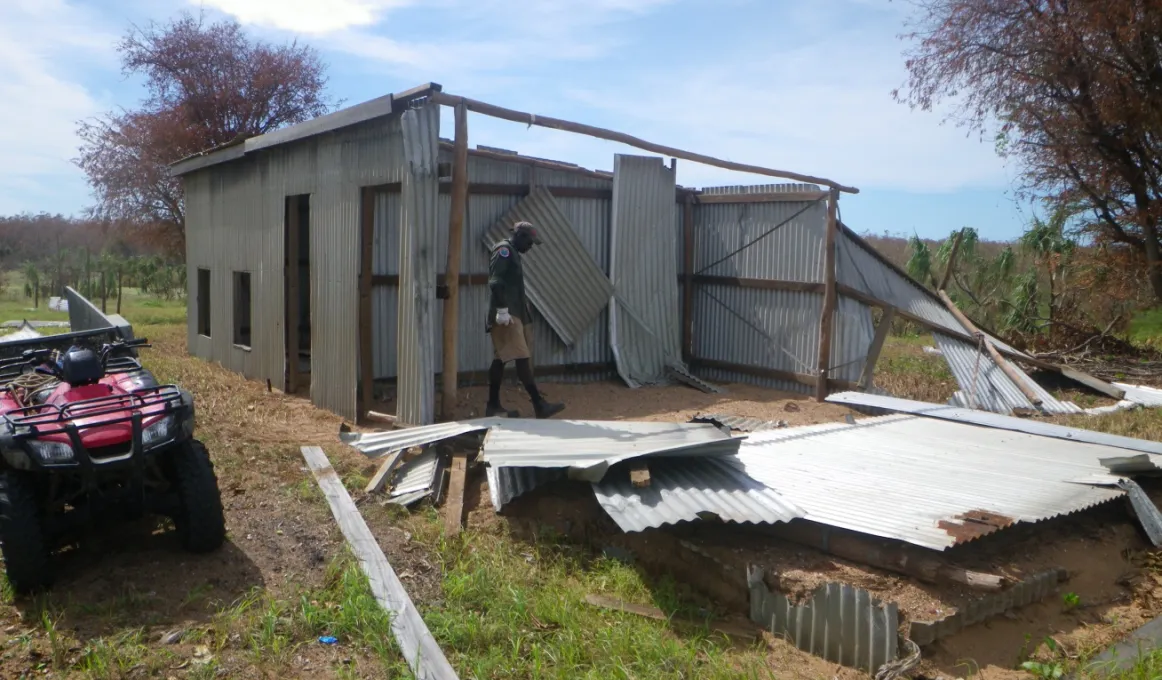Indigenous Rangers at the forefront of Cyclone Lam recovery

When Cyclone Lam smashed its way through Arnhem Land communities recently, leaving devastation in its wake, local Ranger teams were at the forefront of the recovery effort.
When Cyclone Lam smashed its way through Arnhem Land communities recently, leaving devastation in its wake, local Ranger teams were at the forefront of the recovery effort.
Many people see the tasks of Indigenous Rangers as only environmentally related; organising controlled burnings, rescuing injured wildlife and controlling weeds. But the local knowledge and skills of rangers become invaluable in emergency situations.
Milika Marika is a member of the Nhulunbuy based Dhimurru Rangers and remembers the stories his father told him about cyclones.
“Before, the elders would look at the land and see signs of a big storm,” Milika said.
“The animals would be the first indicators that they needed to get out of there; they’d just feel it and know it was a good time to get to a shelter to be safe.
“These days, we need to be a bit more cyclone-wise. There’s more infrastructure and more damage we have to clean up,” Milika said.
When the Rangers first heard that Cyclone Lam was heading towards them, they ensured remote residents were evacuated to towns with cyclone shelters, and collected and stored over 1000 litres of water, and diesel and opal fuel in preparation for the post-cyclone clean-up.
After the cyclone passed, the Rangers were back in action, working closely with service providers and the police to assess the damage and prioritise their work. They cleared tracks, took water and fuel to remote Homelands and ensured generators were working, and removed trees from power lines so power could be restored as soon as possible.
“The first thing we noticed was how many trees had fallen down on houses,” Milika said.
“I’ve been to these communities before and usually they are beautiful, but after the cyclone, with debris everywhere, they looked atrocious. It was good to be able to do something about it.”
Meanwhile, the Crocodile Islands Rangers of Milingimbi and neighbouring Homelands were also busy, patching roofs and clearing communities of fallen trees. The amount of repairs needed in the Milingimbi region was such that reinforcements were called in and the Tjuwanpa Women Rangers from Central Australia travelled to Milingimbi to support the Crocodile Island Rangers in their clean-up efforts.
The Dhimurru and Crocodile Island ranger groups also worked together to clear the road from Murrungga Island airport to the Murrungga Homeland community, an experience Milika enjoyed.
“It was excellent working with a good crew like the Crocodile Island Rangers. They’re Yolngu Rangers as well, different clans but still family,” Milika said.
“We’re from the community, helping the community. Crocodile Rangers and Dhimurru working together. A bit like Bob the Builder, we just got the job done,” Milika said.
Find out more
Indigenous Ranger Groups like Dhimurru, Crocodile Island and the Tjuwanpa Women Rangers are supported by the Australian Government’s Working on Country programme to manage and protect their land and sea country.
There are currently 759 rangers employed nationally through Working on Country.